If you're new to compression socks, this beginner's guide is the perfect place to start. Compression socks can help improve circulation, reduce leg fatigue, and support muscle recovery. Whether you're an athlete, a healthcare professional, or someone who stands or sits for long periods, understanding how compression socks work and who can benefit from them is essential. Read on to learn everything you need to know about compression socks for beginners.
What Are Compression Socks?
Compression socks, sometimes called compression stockings, apply gentle pressure to your legs, ankles, and feet. They are tighter around the toes, foot, and ankle and gradually loosen as they move up the leg. This design helps promote circulation by pushing blood back toward the heart, reducing swelling, and preventing blood from pooling in the veins. For those looking to buy in bulk, options like wholesale compression socks can be a cost-effective way to stock up on different styles.
Types of Compression Socks
There are two primary types of compression socks:
- Graduated Compression Socks: These socks are tight at the ankle and gradually loosen as they go up the leg. They are ideal for active individuals throughout the day, as they help improve circulation and reduce leg fatigue. If you prefer targeted support without full coverage, consider using compression sleeves for legs.
- Anti-Embolism Socks: TED (Thrombo-Embolic Deterrent) socks are typically used for bed-bound patients to prevent blood clots. They are often recommended for people recovering from surgery or those with limited mobility.
Choosing the right type can depend on your activity level and health needs. To find out which level suits you best, it's helpful to understand how to pick the ideal compression level based on your health needs and lifestyle.
Benefits of Compression Socks for Different Needs
Compression socks provide various benefits depending on your lifestyle and health requirements:
- Athletes and Fitness Enthusiasts: These socks enhance performance and speed recovery by reducing muscle fatigue and soreness. Athletes often use them to prevent cramps and improve blood flow during intense activities. Compression socks can also help mitigate certain dancers foot problems.
- Professionals Who Stand or Sit for Long Periods: People in nursing, teaching, or retail professions can benefit significantly from improved circulation and reduced leg discomfort. For options suited explicitly for women, explore a variety of compression socks for women that provide all-day support.
- Travelers: Wearing compression socks during long flights or car rides helps prevent swelling and reduces the risk of developing deep vein thrombosis (DVT).
- Individuals with Circulation Issues: Regularly wearing compression socks can relieve swelling and discomfort for those with varicose veins or recovering from surgery.
How to Choose the Right Compression Socks
- Determine the Compression Level You Need
Compression levels are measured in millimeters of mercury (mmHg). For beginners, a mild compression level of 15-20 mmHg is typically effective in promoting circulation and reducing swelling. Understanding the different levels will help you choose the proper support for your condition, such as compression socks for neuropathy.
- Find the Perfect Fit
Your compression socks should fit snugly but be tight enough. Measure your leg's circumference at the ankle and calf to find the appropriate size. If your socks feel uncomfortable, try a different size or compression level. Knowing the ideal compression level for compression socks can help you identify the best fit for your daily activities.
- Choose the Right Style
Compression socks come in various styles, including knee-high, thigh-high, and full-length tights. Your choice should be based on your daily activities and comfort needs. For example, knee-high socks are popular for everyday use, while thigh-high options provide more coverage and support. If you often deal with cold feet, consider looking for the best compression socks to keep your feet warm.
Wearing Compression Socks Correctly
If you're new to compression socks, wear them for a few hours each day, gradually increasing the duration as your legs adjust. Avoid folding or rolling down the socks, as this can cause them to become too tight and restrict blood flow. For a more targeted approach, compression sleeves for legs can provide support without the full coverage of socks.
Additional Tips for Using Compression Socks
- Pair with Comfortable Shoes: Compression socks combined with supportive shoes can help reduce leg fatigue and discomfort, especially during long periods of standing or walking.
- Rotate Multiple Pairs: Rotate a few pairs of compression socks. This extends their lifespan and ensures you always have a clean pair ready.
- Proper Care: Wash your compression socks regularly with a gentle detergent. Avoid using fabric softeners, as they can damage the material's elasticity.
Common Myths About Compression Socks
Myth: Compression socks are only for older people or people with medical conditions.
Fact: Compression socks benefit anyone looking to improve circulation, whether for sports, travel, or daily comfort.
Myth: Compression socks are uncomfortable to wear for long periods.
Fact: Properly fitted compression socks should feel snug but not restrictive. Choosing the right size and compression level can prevent discomfort.
Myth: Compression socks can't be worn during exercise.
Fact: Certain compression socks, like exercise socks, are designed to enhance performance and reduce muscle soreness during and after physical activity.
Myth: Compression socks are all the same.
Fact: Compression socks come in different styles, materials, and compression levels to suit various needs—from everyday wear to medical-grade support.
Myth: You only need to wear compression socks when you have symptoms.
Fact: Wearing compression socks preventatively can help reduce the risk of developing varicose veins, deep vein thrombosis (DVT), and other circulation issues.
Myth: Compression socks cause high blood pressure.
Fact: Compression socks can raise blood pressure by 5-10 mmHg, but studies show they are unlikely to lower or elevate blood pressure significantly. A doctor may recommend that someone with hypotension (chronically low blood pressure) wear compression socks to help manage their symptoms.
Frequently Asked Questions
What are compression socks?
Compression socks apply gentle pressure to your legs and feet, promoting circulation and reducing swelling.
Who should wear compression socks?
Compression socks benefit athletes, people who stand or sit for long periods, and those with circulation issues.
What compression level is best for beginners?
A 15-20 mmHg compression level is ideal for beginners looking to improve circulation and reduce swelling.
How do I choose the right size of compression socks?
Measure the circumference of your ankle and calf using the sizing chart provided by the manufacturer to ensure a proper fit.
Can compression socks be worn all day?
Yes, but make sure they fit correctly. Start by wearing them for a few hours and gradually increase the duration.

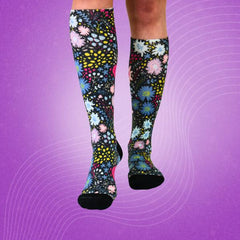
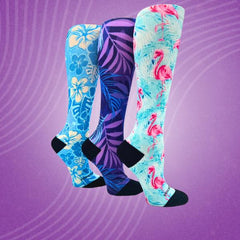
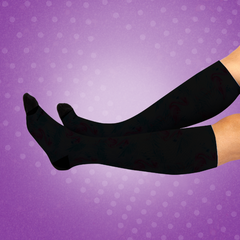

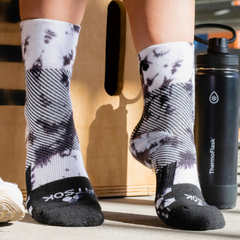
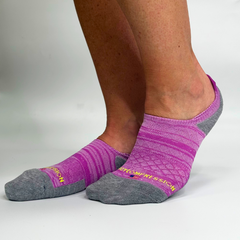
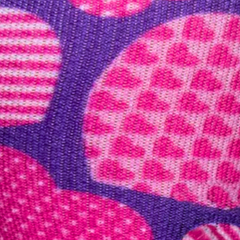




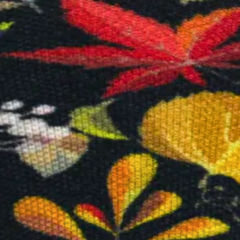




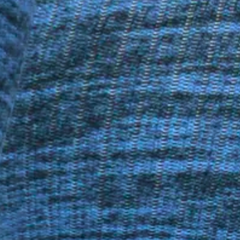


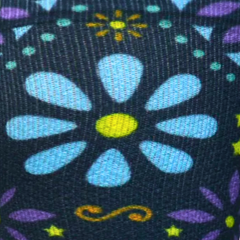
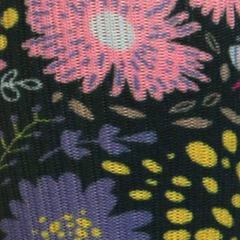
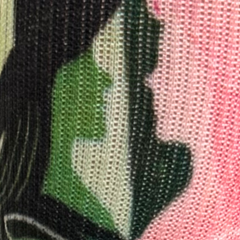

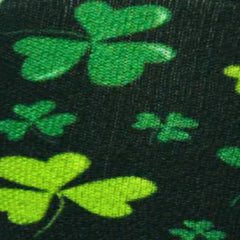
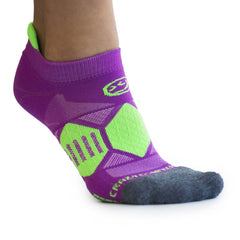

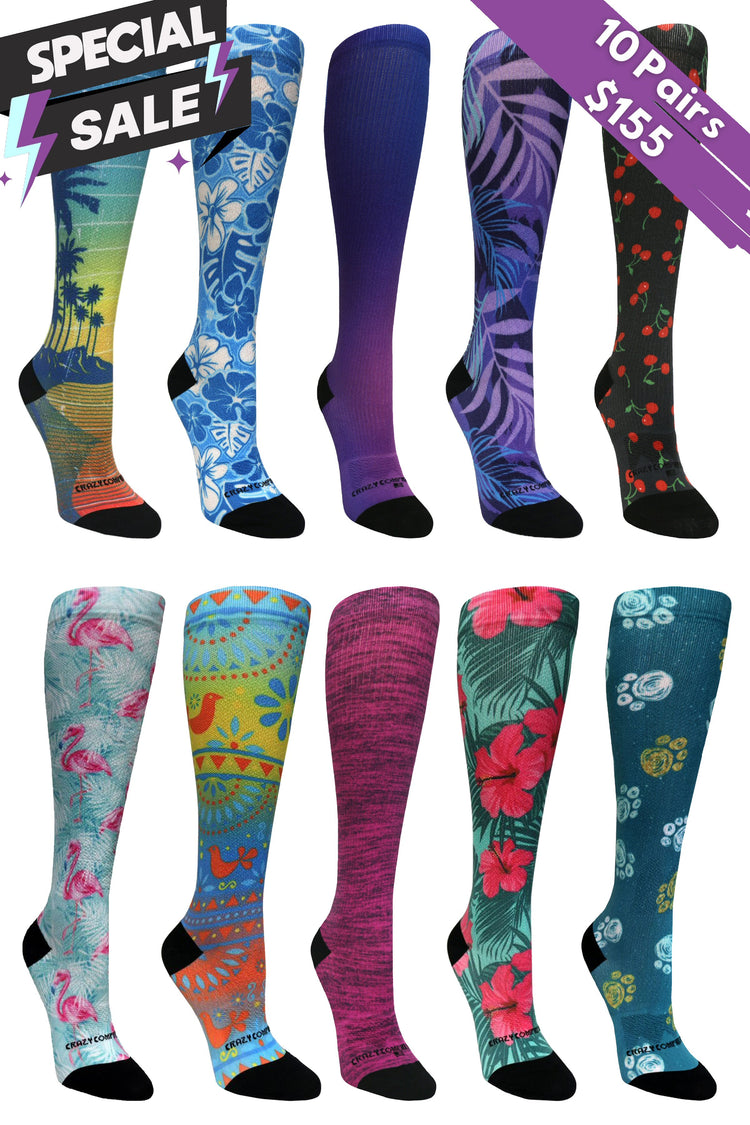


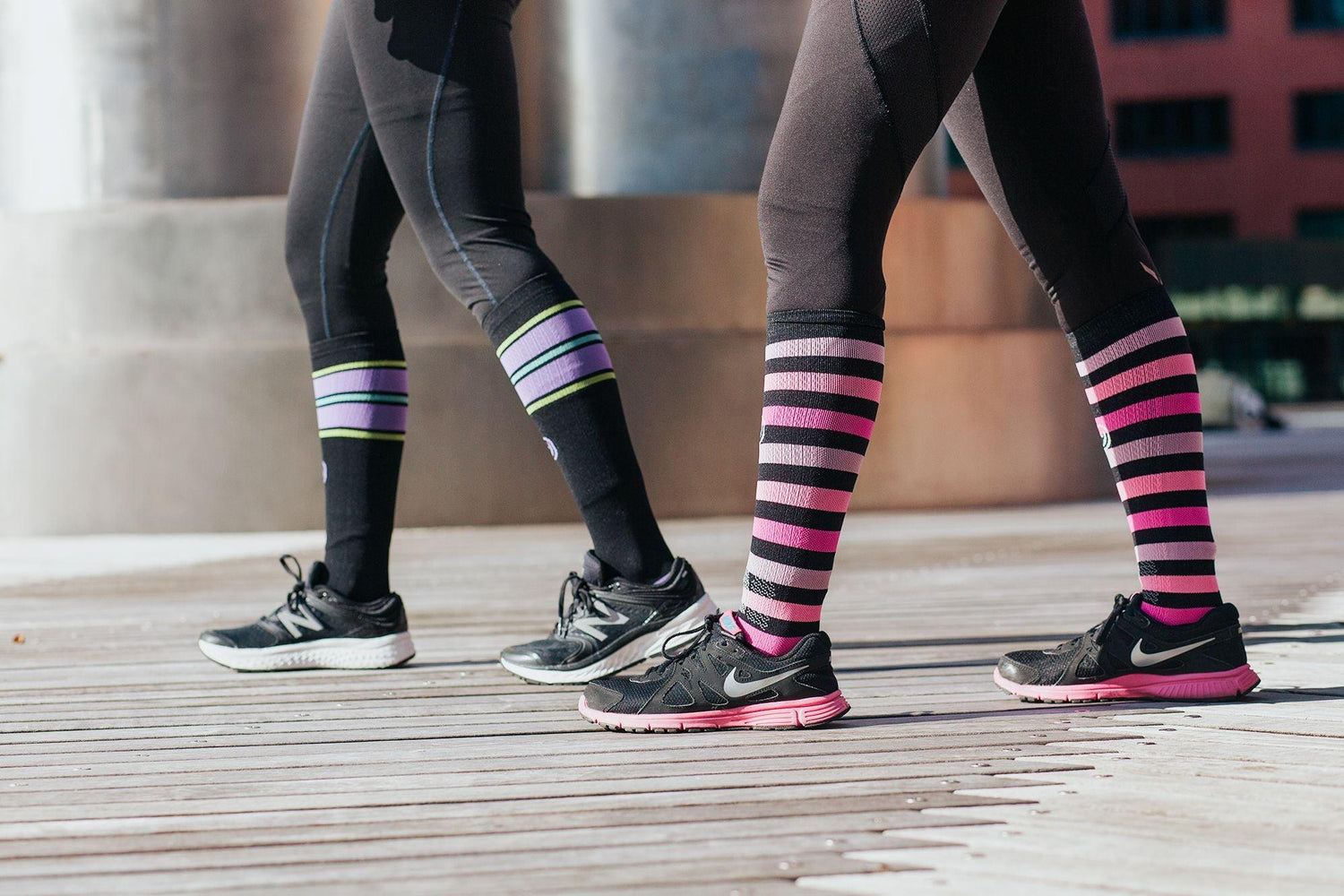


Leave a comment
This site is protected by hCaptcha and the hCaptcha Privacy Policy and Terms of Service apply.